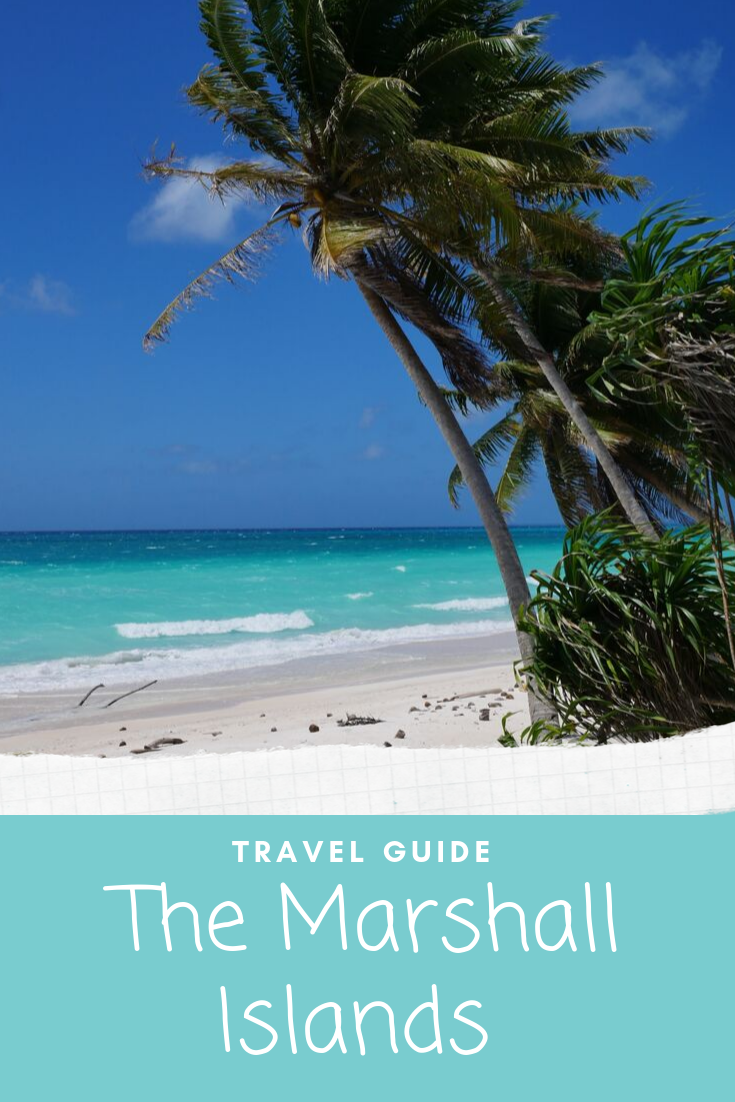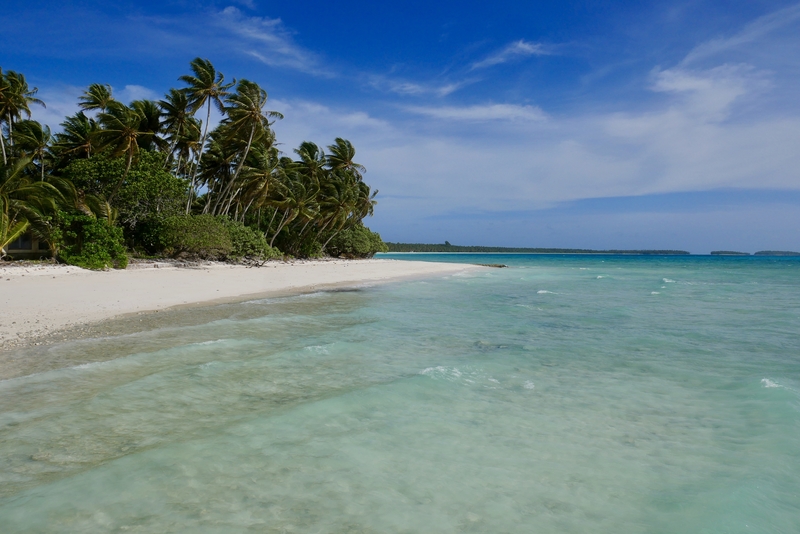
The Marshall Islands: Guide to Majuro and Arno Atoll
The Marshall Islands are a group of Micronesian atolls strung out over the vast Pacific Ocean. They are remote, untouched and truly off the beaten path. Few people have heard of the Marshall Islands. Fewer still have set foot on their sandy shores.
From above, the coral atolls of the Marshall Islands look like ribbons of iridescent blue dotting a cobalt ocean.
Blink once and you see the them.
Blink twice, and they’re gone.
TRAVELING TO THE MARSHALL ISLANDS
Due to the Marshall Islands’ extreme isolation, the country only receives a few thousand tourists per year. Aside from wayward sailors and LDS missionaries, visitors primarily consist of those who come to the area for work in the commercial fishing industry. As a result, there are few guides and resources on travel to the area. Even Lonely Planet offers little more than dried-out Thorn Tree Forum threads with dated travel advice.
Yet, perhaps in part due to their mystery and lack of renown, I felt drawn to the Marshall Islands in the years leading up to my visit.
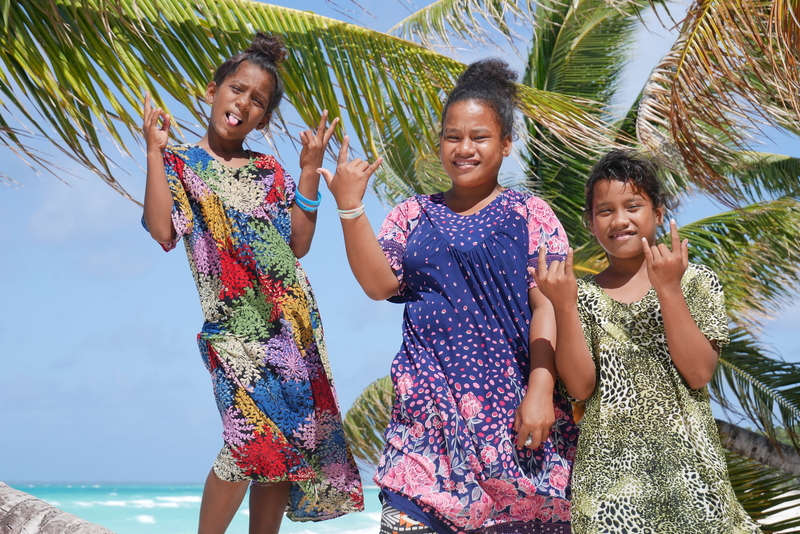
So when my friend, Mariella (a friend whom I had met while teaching in northern Namibia with WorldTeach) told me she had plans to spend six months volunteering on Wotje Atoll in the Marshall Islands, I knew I had to take the opportunity to visit, no matter the logistics.
-
GETTING TO THE MARSHALL ISLANDS
There are limited flights to the Marshall Islands. And the Marshallese capital, Majuro, receives all but a handful of them. The most common (and only direct way) to get from North America to the Marshall Islands, is by way of United Airlines’ Island Hopper.
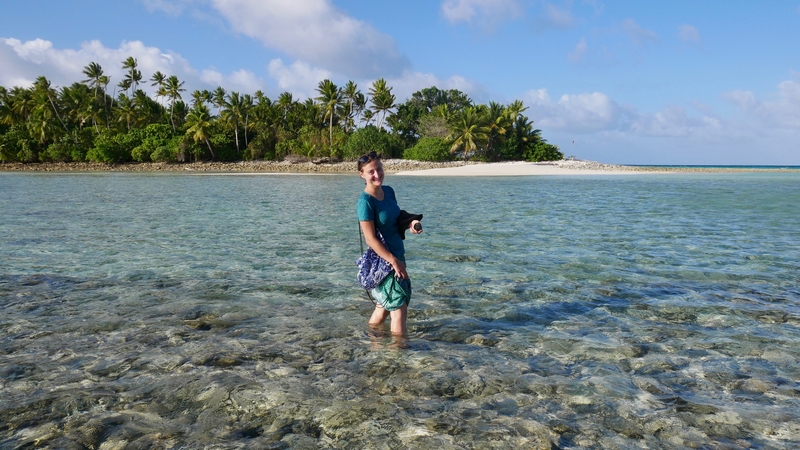
The Island Hopper is a remnant of Pacific Continental Holdings and a lifeline for the remote communities of the Pacific. Connecting a string of islands between Honolulu and Guam, the exorbitantly priced flight takes the better part of an entire day to complete in its entirety. Along the way, it stops in Majuro, Kwajalein, Pohnpei, Kosrae and Chuuk.
-
GETTING AROUND THE MARSHALL ISLANDS
Traveling between the atolls of the Marshall Islands is best left to those with loads of time on their hands.
Flights between the Marshall Islands’ outer atolls are expensive, limited and unpredictable. Air Marshall Islands (also known as Air Maybe) flies between Majuro and the larger outer atolls, but flights are often severely delayed or canceled due to weather. Alternatively, some islands may be accessed by cargo boats that travel between Majuro and the outer islands. But even those can be unreliable.
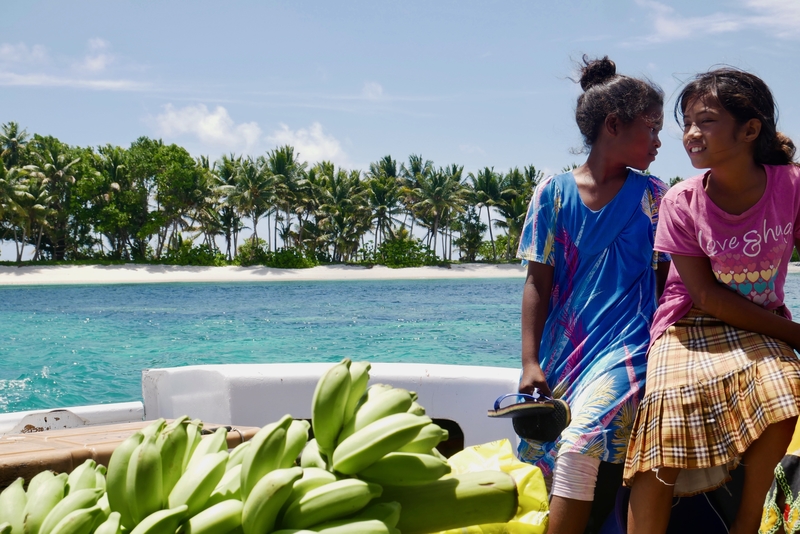
When my friend had to fly between Majuro and Wotje for her teaching assignment, she learned that the weekly flight had been suspended indefinitely due to runway construction. Her only other alternative—a 24 hour boat ride—was also delayed because of the rough January seas. As a result, she was essentially stuck in Majuro for the first few weeks of her contract.
-
GETTING AROUND MAJURO WITHOUT A CAR
As difficult as it is to travel to and around the Marshall Islands, getting around Majuro Atoll without a car is both easy and straightforward. The skinny atoll contains only one main road that extends from Darrit to Laura. Shared taxis peruse the road, picking people up and dropping them off at their destinations for a small fee. Standard fees around Majuro are $1 per passenger. To get to and from the airport, the fee is $5.
MAJURO ATOLL: CAPITAL OF THE MARSHALL ISLANDS
Due to irregular flight schedules from the capital, Majuro, I couldn’t quite swing a visit to the far-flung Wotje. So instead, Mariella and I decided to meet in Majuro and spend a few days of peace and solitude along the paradisaical sands of nearby Arno Atoll.
Prior to catching the boat to Arno, we spent a half day in Majuro—shopping for handicrafts at Elefa, eating fresh sashimi at the MISCO Market and figuring out the logistics of our rustic beach vacation.
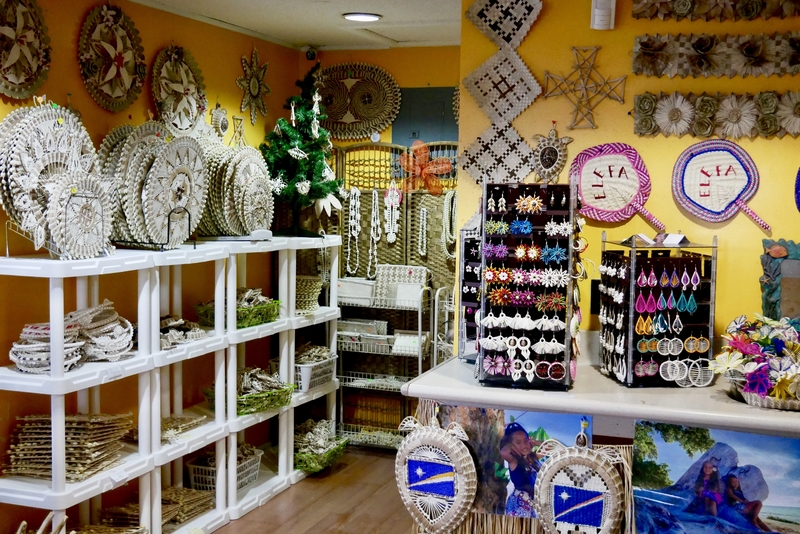
There is very little tourism on Majuro and, consequently, accommodation options are virtually nil. The few options that exist are underwhelming and overpriced. Most tourists stay at Robert Reimers or the Marshall Islands resort.
For our night in Majuro, Mariella organized a stay in the unique container house apartments next to EZ Price. The immaculate apartments—equipped with air conditioning, a kitchen, TV, (questionable) Internet and a comfortable sitting area—cost $75 per night.
The apartment complex (reservable from the office on the second floor of EZ Price) is truly a diamond in the rough when it comes to lodging.
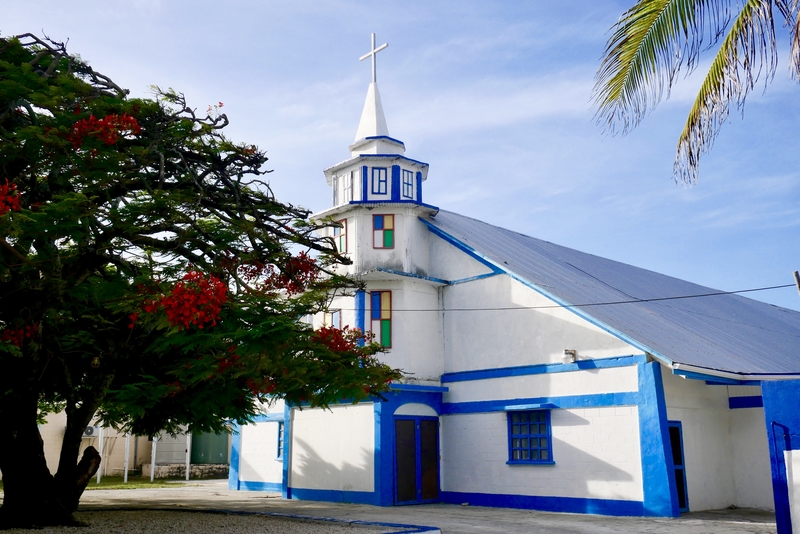
Majuro is a densely populated, polluted string of land at odds with the romantic images of tropical paradise that I had conjured in my head. I arrived in Majuro and was immediately struck by the island’s overdevelopment. Houses and shops cover every inch of the island’s real estate and cars clog its single road. People are everywhere, beaches are almost nonexistent and stray dogs bark viciously at passersby.
Though Majuro may leave a lot to be desired, however, it is not devoid of things to do. My Marshall Islands itinerary didn’t give me enough time to adequately explore Majuro Atoll, but my friend recommended visiting Laura Beach and Eneko Island.
ARNO ATOLL
Majuro Atoll’s greatest tourism asset is its proximity to Arno. Located only an hour away from Majuro by boat, Arno’s laid-back shores are worlds away from the hustle and bustle of the capital.
Arno is the Pacific I’d dreamed about. It is the Pacific of swaying palms, of white sand beaches and of turquoise seas.
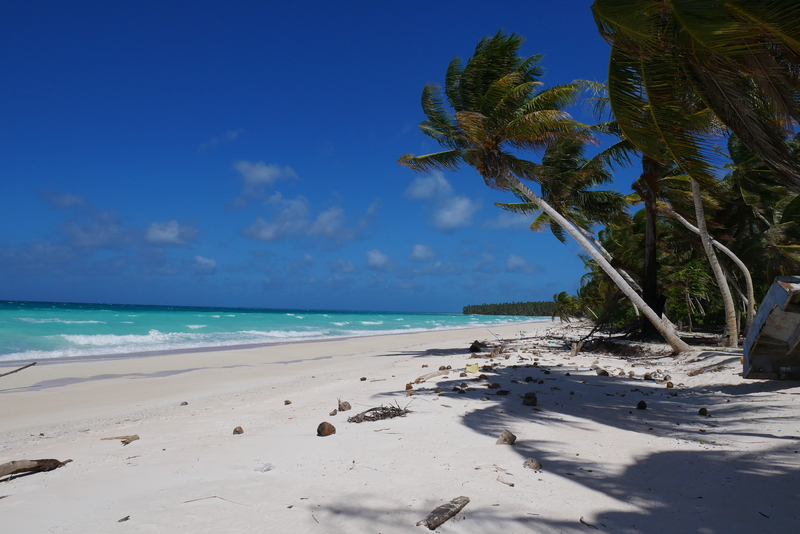
A boat makes the return trip between Majuro and Arno Atoll every Monday, Wednesday and Friday. The boat leaves from the dock near Robert Reimers at around 10am and transports passengers and cargo between the islands. It is the only connection that Arno’s residents have to the outside world. Tourists traveling between the two islands pay $15 each way for the hour-long passage.
The Beachcomer’s Lodge is the only place to stay on Arno. The lodge’s rustic lagoon-facing cabins offer spacious, ventilated rooms that overlook a swathe of white sand beach. For $50 a night, Mariella and I rented a room with a small kitchenette. The room’s large windows afforded a view of Arno’s brilliant white sand and turquoise water.
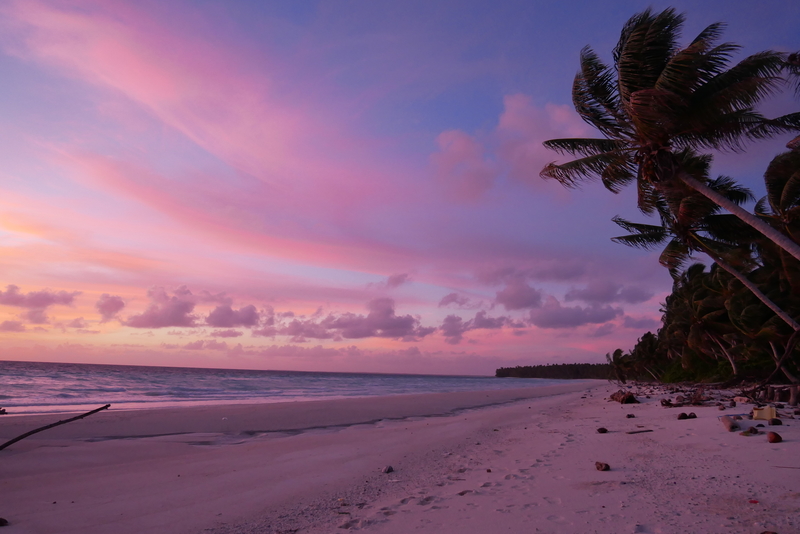
There isn’t much to do on Arno Atoll, which is precisely what makes the island so special.
On the ribbon-like atoll, we spent our mornings soaking in the vast expanse of powdery beach. In the afternoons, we took walks down the island’s solitary palm-shielded road and relished the tranquility of our surroundings. And at sundown, we stood in awe as colors painted the skies in a palette of fiery hues.
THE MARSHALL ISLANDS: A DISAPPEARING PARADISE
While our three days on Arno Atoll were pure bliss, they also forced us to think about what the future of the Marshall Islands might look like.
During our walks, Mariella and I followed the main road from the Beachcomer, past the dock, to where the island is so thin that water is visible on either side. We became acutely aware of just how little the oceans would have to rise in order to wipe the Marshall Islands completely off the world map.
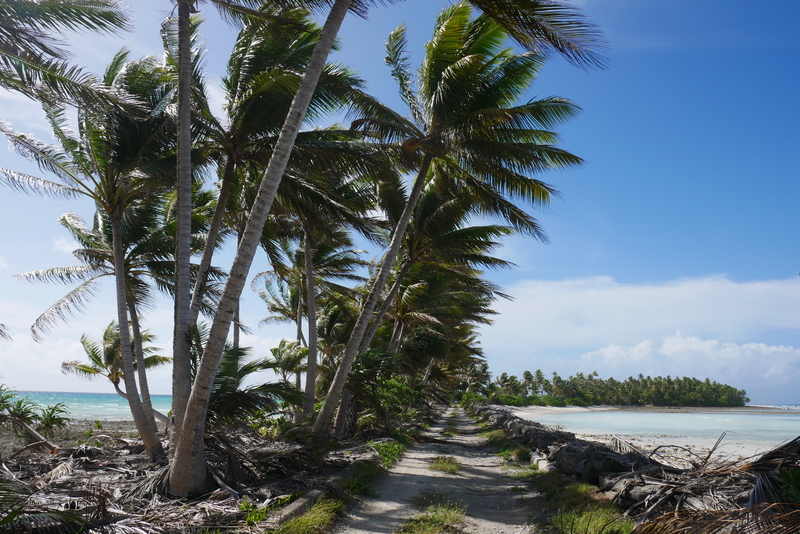
Throughout the Marshall Islands, climate change is an elephant in the room. These 29 low-lying atolls rise only a few feet above sea level. The highest point on the Marshalls stands at 30ft. On densely-populated Majuro Atoll, the highest point reaches less than 10ft.
With the rising of the oceans, these islands are likely to disappear.
It is no wonder the Marshallese are so worried about climate change.

Yet, while addressing climate change is critical to the future of the Pacific Islands, the Marshallese are no strangers to the outside world wreaking havoc on their environment. Between 1946 and 1958, the U.S. used the Marshall Islands as a testing ground for nuclear bombs. Twenty-three tests took place on Bikini Atoll, and another 44 bombs were detonated at Enewetak.
Fallout from the testing affected the entire country and forced thousands of islanders to flee their homes.
And today, the sandy beaches of the Marshall Islands face yet another pollutant: Plastic.
Even on the pristine beaches of far-flung Arno Atoll, I found plastic waste embedded in tree roots, wedged into the sand and bobbing in the turquoise water. The waste—most of it clearly washed up from the oceans—threatens the country’s fish supply and contaminates its shores.
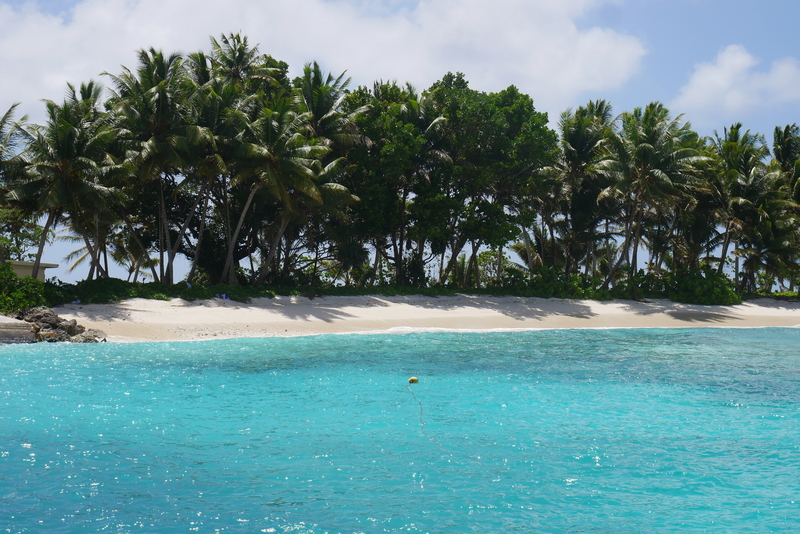
Seeing the impacts of pollution and climate change on Arno Atoll forced me to think long and hard about the steps I should take to reduce plastic waste and offset my carbon footprint. Because the Marshall Islands are a special paradise.
To lose them would be a tragedy.
***
The atolls of the Marshall Islands are everything that major beach vacation destinations are not. They are untouched by tourism, unspoiled by development and unheard of by the world at large.
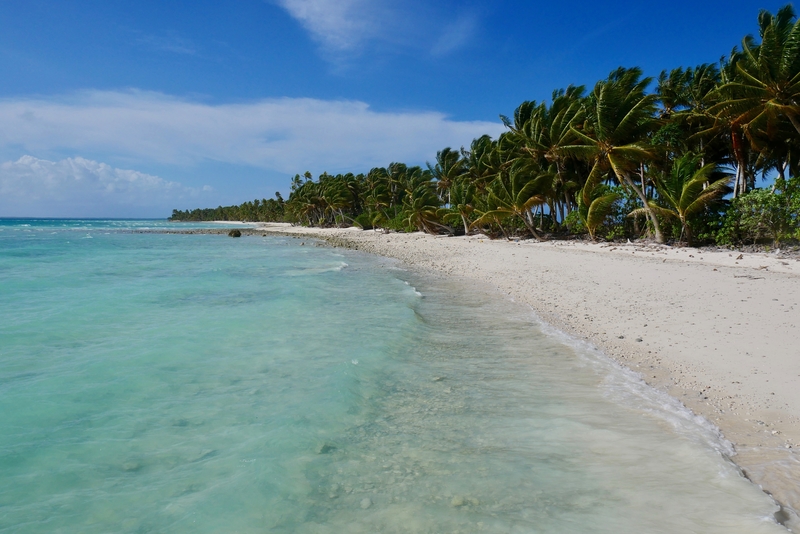
Traveling to the Marshall Islands isn’t for everyone. The islands are remote and offer little in the way of luxury.
Unlike Hawaii or French Polynesia, tourist amenities are limited and often substandard. But for those who have time, patience, curiosity about the unknown a thirst for adventure, the Marshall Islands—at least for now— stand out as one of the last beacons of truly untouched paradise on Earth.
_______________________________________
Like this Marshall Islands Travel Guide? Pin it!
